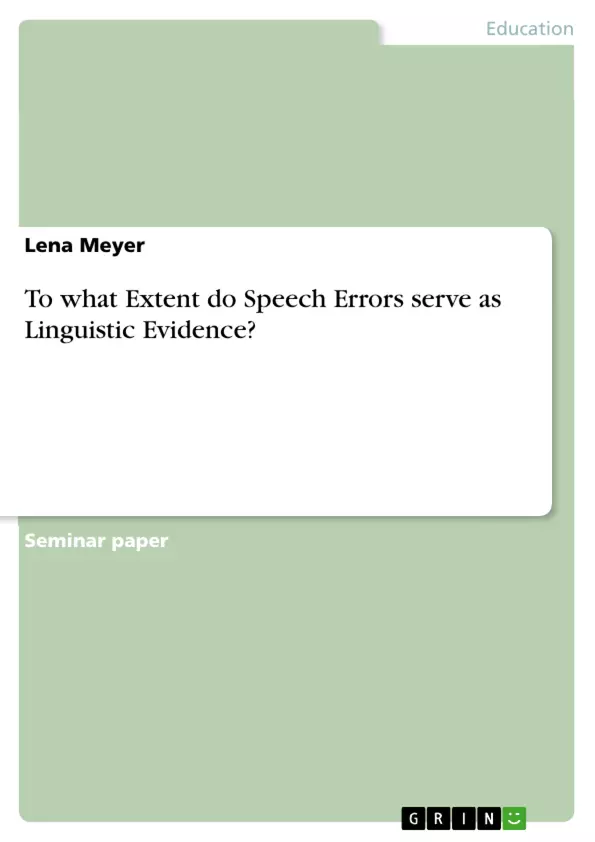Theories about speech production and its underlying rules are of increasing interest for linguistic research and have been for many years already.
Errors of speech play an important role in these theories, as do errors in reading and writing. Although latter error types deliver further evidence supporting the ideas presented in this paper, the considerations gathered will, in default of space, be restricted to slips of the tongue. This error type is by Boomer’s and Laver’s definition: “an involuntary deviation in performance from the speaker’s current phonological, grammatical or lexical intention.”
Further distinctions will be made in respective chapters of this paper. Each error type will be illustrated by examples found in the appendixes of Fromkin’s “Speech Errors as Linguistic Evidence” (1973) and Cutler’s “Slips of the Tongue and Language Production” (1982). All of the presented examples will be indented and made up in the same way: the intended sentence, phrase or word is to be found on the left, the erroneous output follows after a symbol.
Where it is possible, personal observations and own examples are added.
Inhaltsverzeichnis (Table of Contents)
- General Introduction
- Theoretical and biological approaches – models of speech production
- The First Law and historical change
- Distinguishing errors and associated difficulties
- Error types and inferred conclusions
- Anticipation and Perseveration errors
- Omission and Addition errors
- Exchange and Substitution errors
- Blends and Spoonerisms
- Summary of presented ideas and conclusion
Zielsetzung und Themenschwerpunkte (Objectives and Key Themes)
This paper aims to explore the importance of speech errors as a tool for understanding the mental lexicon and the processes involved in speech production. The primary focus is on analyzing slips of the tongue and how they provide valuable insights into the organization and functioning of the speaker's mind.
- Theories and models of speech production
- Types and classifications of speech errors
- The relationship between speech errors and linguistic rules
- The role of speech errors in language change
- The limitations of existing models and theories
Zusammenfassung der Kapitel (Chapter Summaries)
- General Introduction: Introduces the topic of speech production and its importance in linguistic research. Discusses the role of speech errors in understanding the underlying rules of speech production and examines different theoretical approaches to modeling speech production.
- Theoretical and biological approaches – models of speech production: Explores various models of speech production, including Cohen's three-staged model and Laver's concept of automatically operating speech patterns. Discusses the idea that errors can occur at different stages of speech production, from planning to actual performance.
- The First Law and historical change: Presents Wells' First Law of speech errors, which states that slips of the tongue are practically always phonetically possible. This law emphasizes the non-random nature of speech errors and their potential to reveal historical changes in language.
- Distinguishing errors and associated difficulties: Discusses the challenges of classifying and differentiating speech errors. Outlines four major categories of errors based on Cutler's research: segment errors, syllable and morphological errors, word errors, and errors concerning larger units.
Schlüsselwörter (Keywords)
The main keywords and focus topics of the text include speech production, speech errors, slips of the tongue, linguistic models, mental lexicon, language change, historical change, phonology, morphology, semantics, and the First Law of speech errors. These terms reflect the core concepts and research interests explored in the work.
- Quote paper
- Lena Meyer (Author), 2012, To what Extent do Speech Errors serve as Linguistic Evidence?, Munich, GRIN Verlag, https://www.grin.com/document/299329



